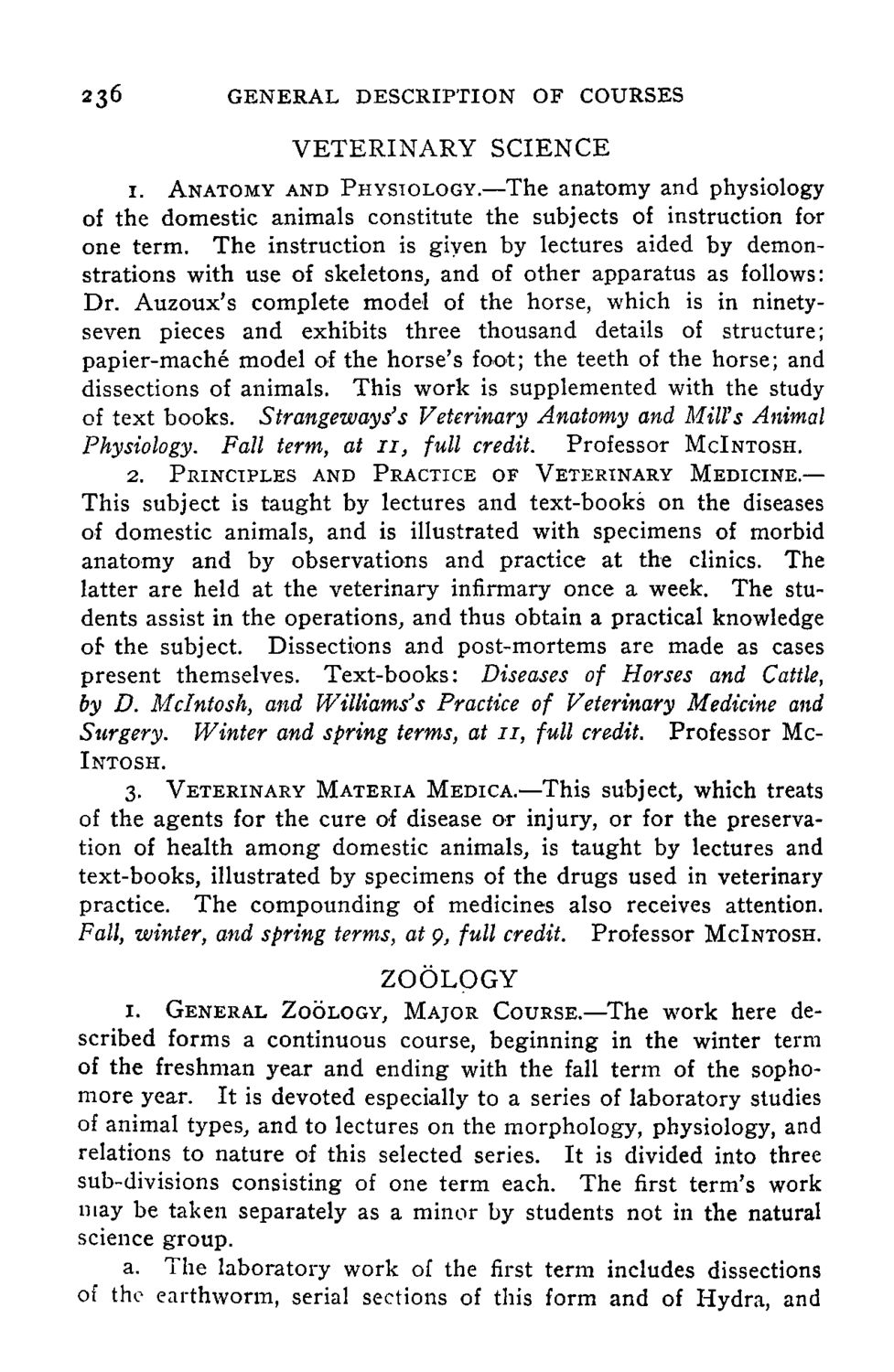Caption: Course Catalog - 1897-1898
This is a reduced-resolution page image for fast online browsing.

EXTRACTED TEXT FROM PAGE:
236 GENERAL DESCRIPTION OF COURSES VETERINARY SCIENCE 1. ANATOMY AND PHYSIOLOGY.—The anatomy and physiology of the domestic animals constitute the subjects of instruction for one term. The instruction is given by lectures aided by demonstrations with use of skeletons, and of other apparatus as follows: Dr. Auzoux's complete model of the horse, which is in ninetyseven pieces and exhibits three thousand details of structure; papier-mache model of the horse's foot; the teeth of the horse; and dissections of animals. This work is supplemented with the study of text books. Strangeways's Veterinary Anatomy and Mill's Animal Physiology. Fall term, at 11, full credit. Professor MCINTOSH. 2. PRINCIPLES AND PRACTICE OF VETERINARY MEDICINE.— This subject is taught by lectures and text-books on the diseases of domestic animals, and is illustrated with specimens of morbid anatomy and by observations and practice at the clinics. The latter are held at the veterinary infirmary once a week. The students assist in the operations, and thus obtain a practical knowledge of the subject. Dissections and post-mortems are made as cases present themselves. Text-books: Diseases of Horses and Cattle, by D. McIntosh, and Williams's Practice of Veterinary Medicine and Surgery. Winter and spring terms, at 11, full credit. Professor MCINTOSH. 3. VETERINARY MATERIA MEDICA.—This subject, which treats of the agents for the cure of disease or injury, or for the preservation of health among domestic animals, is taught by lectures and text-books, illustrated by specimens of the drugs used in veterinary practice. The compounding of medicines also receives attention. Fall, winter, and spring terms, at 9, full credit. Professor MCINTOSH. ZOOLOGY 1. GENERAL ZOOLOGY, MAJOR COURSE.—The work here de- scribed forms a continuous course, beginning in the winter term of the freshman year and ending with the fall term of the sophomore year. It is devoted especially to a series of laboratory studies of animal types, and to lectures on the morphology, physiology, and relations to nature of this selected series. It is divided into three sub-divisions consisting of one term each. The first term's work may be taken separately as a minor by students not in the natural science group. a. The laboratory work of the first term includes dissections of the earthworm, serial sections of this form and of Hydra, and
|